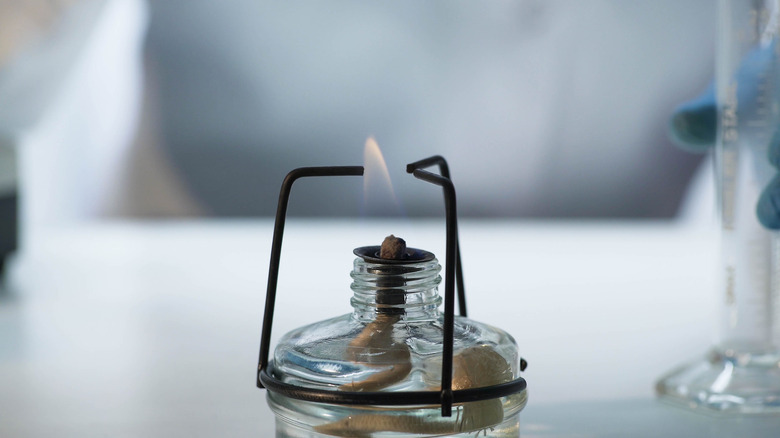How Does Temperature Affect Catalase Enzyme Activity?
Hydrogen peroxide is the byproduct of numerous biological processes, and to break down this molecule, the body uses an enzyme called catalase. Like most enzymes, the activity of catalase is highly dependent on temperature. Catalase is most effective at an optimum temperature, with less-than-optimal catalysis taking place at hotter or colder temperatures.
TL;DR (Too Long; Didn't Read)
Catalase functions best at around 37 degrees Celsius — as the temperature gets warmer or cooler than that, its ability to function will decrease.
What Catalase Does
What Catalase Does
Hydrogen peroxide is toxic to most living organisms. However, many organisms can break it down into less reactive products through the use of catalase. One molecule of catalase enzyme is capable of deconstructing 40 million molecules of hydrogen peroxide into water and oxygen in 1 second. This reaction can be observed in a tissue sample that contains catalase and the addition of hydrogen peroxide. The results of the reaction can be seen as the formation of bubbles of oxygen.
Structure and Molecular Mechanism
Structure and Molecular Mechanism
The catalase enzyme is comprised of four polypeptide chains, with each chain containing more than 500 amino acids. Catalase's four iron-containing groups allow it to interact with hydrogen peroxide molecules. As hydrogen peroxide enters the active site of the catalase enzyme, it interacts with two amino acids, causing a proton to transfer between the oxygen atoms. This forms a new water molecule, and the freed oxygen atom then goes on to react with another hydrogen peroxide molecule to form water and an oxygen molecule.
Effects of Temperature
Effects of Temperature
The effects of catalase, like those of all enzymes, are influenced by the surrounding temperature. Temperature has an effect on both the structure of the catalase itself and the hydrogen bonds it is designed to cleave. As the temperature increases toward the optimum point, hydrogen bonds loosen, making it easier for catalase to act on hydrogen peroxide molecules. If the temperature increases beyond the optimum point, the enzyme denatures, and its structure is disrupted. In humans, the optimum temperature for catalase is 37 degrees Celsius.
Role in Living Organisms
Role in Living Organisms
Although its ability to break down a toxic molecule such as hydrogen peroxide might make catalase seem to be an indispensable commodity, mice engineered to develop without catalase have a normal physical appearance. Some research has indicated that a lack of catalase can lead to the development of type 2 diabetes. It seems that some other molecules within living organisms are able to sufficiently break down hydrogen peroxide—enough to sustain life. The toxic nature of hydrogen peroxide also makes it a powerful disinfectant.
Cite This Article
MLA
Smith, Brett. "How Does Temperature Affect Catalase Enzyme Activity?" sciencing.com, https://www.sciencing.com/temperature-affect-catalase-enzyme-activity-7776025/. 30 April 2018.
APA
Smith, Brett. (2018, April 30). How Does Temperature Affect Catalase Enzyme Activity?. sciencing.com. Retrieved from https://www.sciencing.com/temperature-affect-catalase-enzyme-activity-7776025/
Chicago
Smith, Brett. How Does Temperature Affect Catalase Enzyme Activity? last modified August 30, 2022. https://www.sciencing.com/temperature-affect-catalase-enzyme-activity-7776025/
